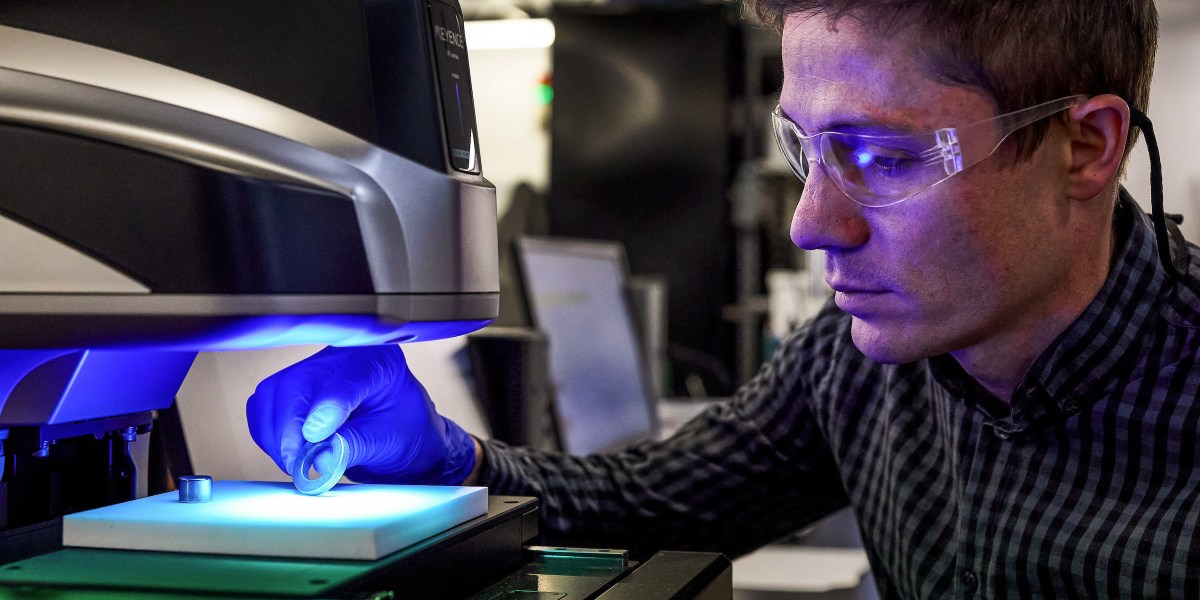Rare earth metals became ubiquitous across technologies because they represented “a huge jump” in the energy density of magnets when they were discovered in the 1960s, says Matthew Kramer, a senior scientist at Ames National Laboratory.
One of the primary gauges of a magnet’s properties is its energy density, measured in mega-gauss-oersteds (MGOe). While the ferrite magnets on your fridge likely have an MGOe of around 5, neodymium-based magnets are much stronger, reaching around 50 MGOe.
Rare earth metals like neodymium are currently a crucial ingredient in permanent magnets because they can wrangle other metals into an arrangement that helps generate a strong magnetic field.
Permanent magnets produce magnetic fields because of spinning electrons, small charged particles in atoms. Different elements have different numbers of free electrons that in some circumstances can be made to spin in the same direction, generating a magnetic field. The more electrons that are free and spinning in the same direction, the stronger the magnetic field.
Iron has a lot of free electrons, but without an overarching structure they tend to spin in different directions, canceling each other out. Adding in neodymium, dysprosium, and other rare earth metals can help arrange iron atoms in a way that allows their electrons to work together, resulting in powerful magnets.
Iron nitride does what few other materials can: it arranges iron into a structure that gets electrons spinning together in this way and keeps them aligned—no rare earth metals required.
“If you could get the nitrogen to spread these irons out in the appropriate way, you should be able to potentially get a really, really good permanent magnet,” Kramer says. That has proven to be a challenge though, he adds, because it’s difficult to make these materials in bulk and to harness the complex chemistry in a way that forces them to retain their magnetization.
Idea to execution
After Wang was able to reliably create thin films of iron nitride, the next step was to figure out how to make it in bulk, grind it up, and squish it together to make magnets.

